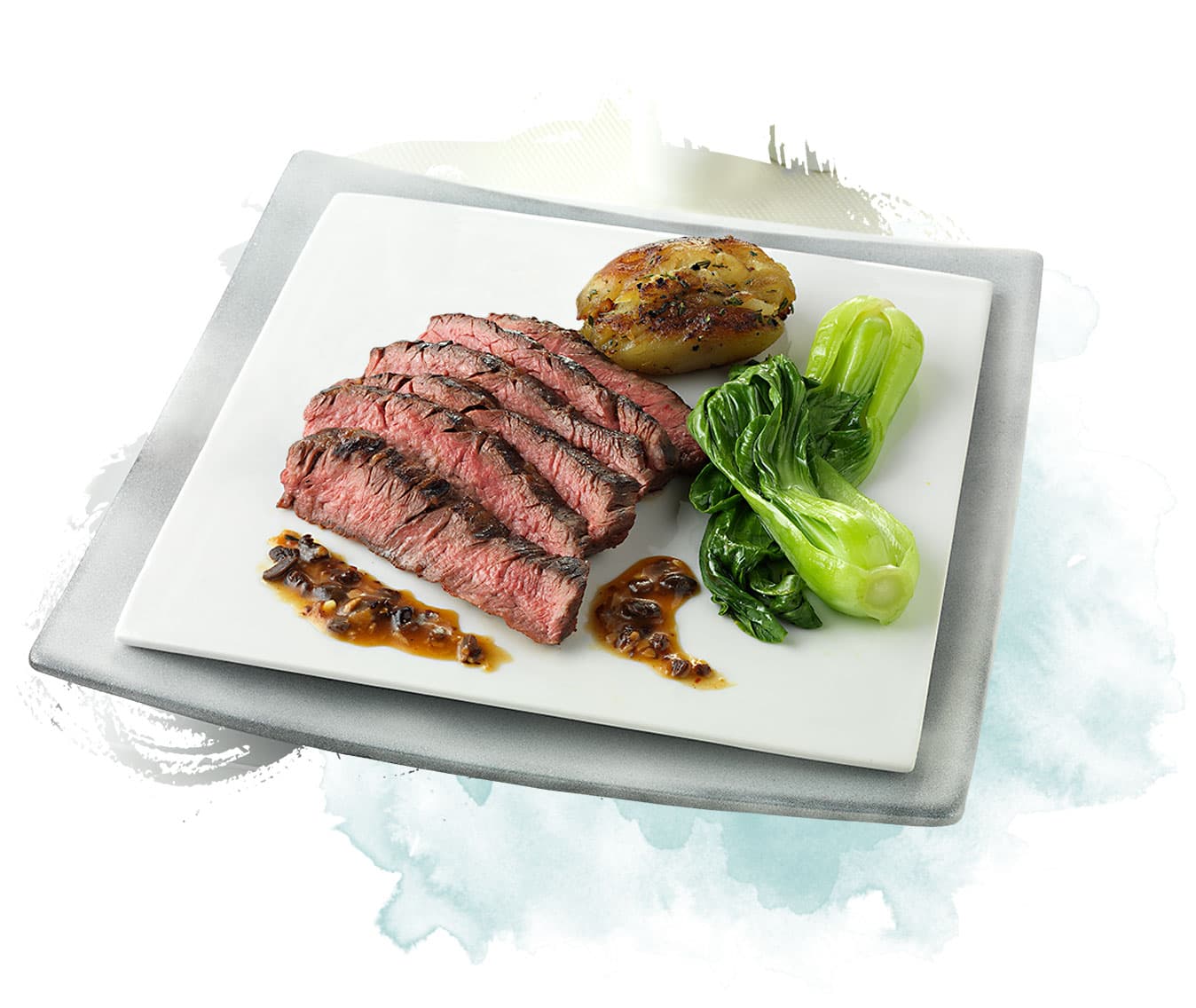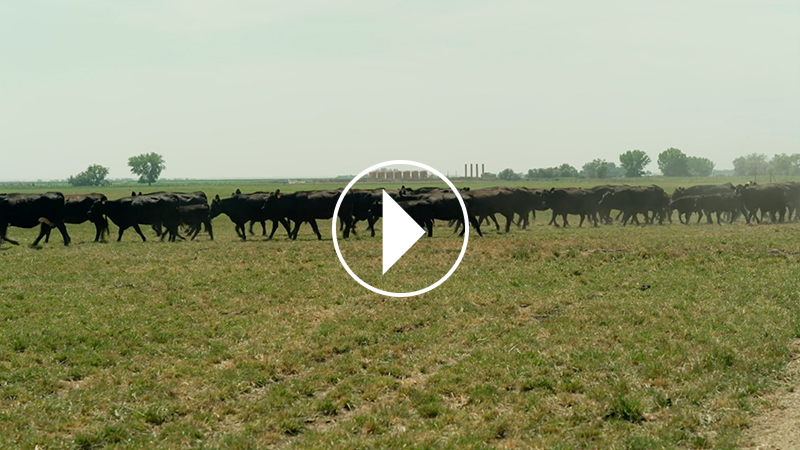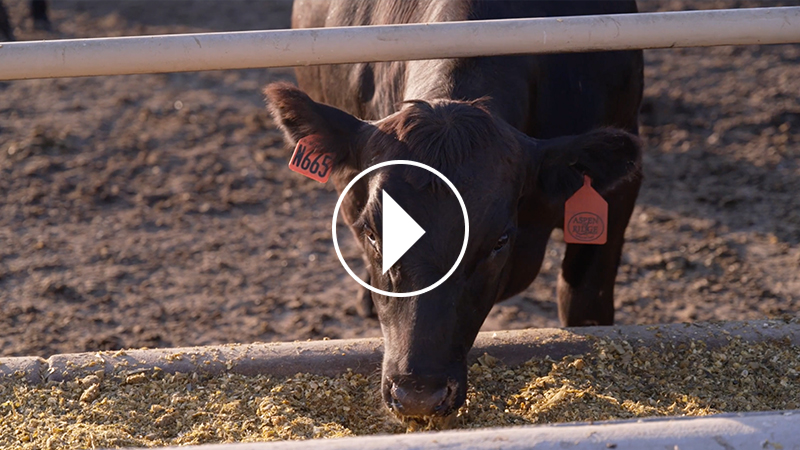
Frequently Asked Questions
Have a question about Aspen Ridge® Natural Angus beef products or want to learn more about our processes? We’re happy to help. Find answers below or contact us for more information.
Products
Yes! All Aspen Ridge cattle are sourced from family-owned farms and ranches in the United States. They are born, raised, and processed in the USA.
Aspen Ridge products can be found at various retailers throughout the United States. Contact us to find retailers or restaurants near you.
Looking to offer Aspen Ridge Natural Angus beef products? Browse our retail and foodservice pages or get in touch.
Natural Beef
The United States Department of Agriculture (USDA) has defined “Natural” as a product that contains no artificial ingredients and is minimally processed.

Aside from meeting the USDA definition of Natural, we pride ourselves in exceeding “the standard” at every step of the process. For us, Natural also encompasses how cattle are raised: humanely, with no added hormones or antibiotics, and fed no animal by-products.
Learn more about Natural beef and other beef labels.
Natural and Certified Organic are separate designations for beef products. While Natural beef can also be Certified Organic, it doesn’t always meet Certified Organic requirements, which include meeting different production standards and third-party verification.
Learn more about the differences between Natural and Certified Organic.
Producers may choose to use antibiotics to treat or prevent sickness in animals. Even if an animal is given an antibiotic, farmers and processers must allow a specific amount of time to pass before harvesting that animal. This is known as a “withdrawal period”, which allows time for the animal’s body to naturally metabolize the antibiotic, meaning that all meat on today’s grocery shelves is “antibiotic-free”. The Food Safety Inspection Service (FSIS) randomly samples animals and tissues at the time of slaughter to ensure a safe food supply.

When you see this label on a package of beef, it designates that the cattle from which that product came from never received antibiotics in their lifetime.
The health and well-being of our cattle is at the forefront of everything we do. In the event that one of our herd requires antibiotic treatment, which is determined by a professional veterinarian after a health examination, we will treat that animal accordingly and remove it from the Aspen Ridge program, placing it in a more conventional program. Don’t forget, even if an animal is given antibiotics, farmers and processers must allow a specific amount of time to pass before that animal is able to be harvested.

Hormones are naturally occurring in all living organisms. They help animals grow, reproduce, and maintain the body’s daily functions. So, cattle can never be truly “hormone-free.” However, some beef producers, like us, raise cattle without added hormones, meaning cattle never receive growth promotants or steroids.

No. Our cattle are fed a high-energy grain diet that meets their growth needs in every phase of life. This results in unmatched flavor and quality.
Angus Beef

Angus is a breed of cattle that naturally produces high amounts of marbling, creating flavorful, juicy products.
USDA Prime is the highest designation on the USDA Beef Grading Scale, a scoring system that takes into account marbling, quality, and other characteristics of beef. There are three classifications for red meat including; Prime, Choice, and Select.
Learn more about USDA Prime Angus beef.
Preparation
Preparing Natural Angus beef is easy, whether you grill, roast, or pan-fry it. View tasty recipes with preparation instructions or learn about the most versatile beef cuts and how to cook them.
According to foodsafety.gov, the minimum safe temperature is 145°F for fresh beef and 160°F for ground beef.
If you plan to freeze beef, you should freeze it as soon as possible following your purchase. Avoid thawing and refreezing beef for optimal food safety.
To thaw beef, place it on a plate or tray and refrigerate it until it has defrosted. The cut of beef will determine the time for defrosting.
Never thaw beef at room temperature. Get more tips and learn about defrosting times from Beef. It’s What’s for Dinner.
There are eight major regions of the beef animal from which cuts are derived, called “Primals.” Primals include: Chuck, Rib, Loin, Sirloin, Round, Brisket, Plate, and Flank. These eight primal cuts are where many of the beef items you enjoy today come from. You have plenty of options for your next recipe!
Learn more about common cuts like Natural Angus ribeye steak and New York strips and how to prepare them.
Yes! Beef is an excellent source of protein and several vitamins and minerals needed in a healthy diet. In fact, just one 3-oz. serving of beef provides 25g on average of protein—roughly 50% of your daily value!
